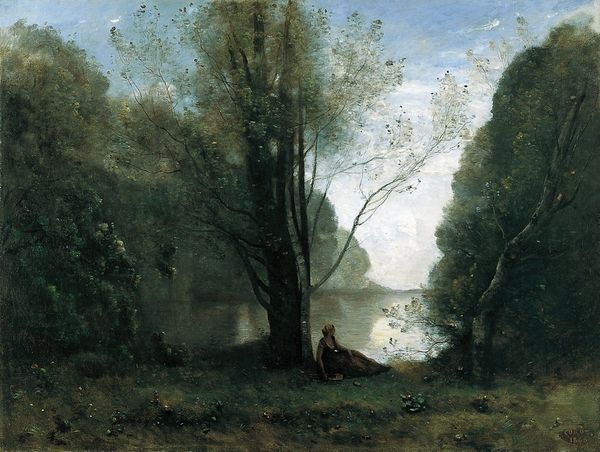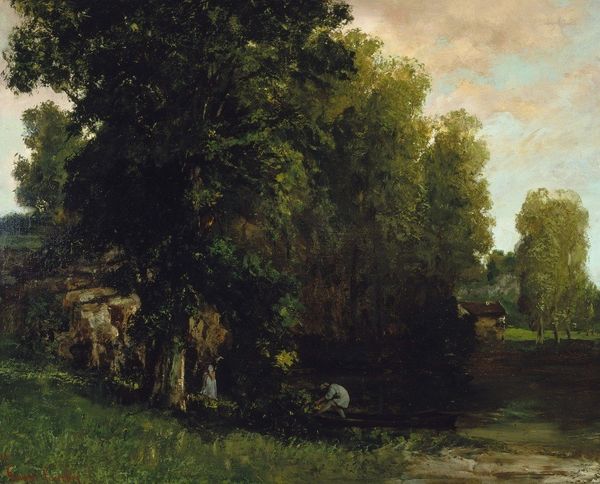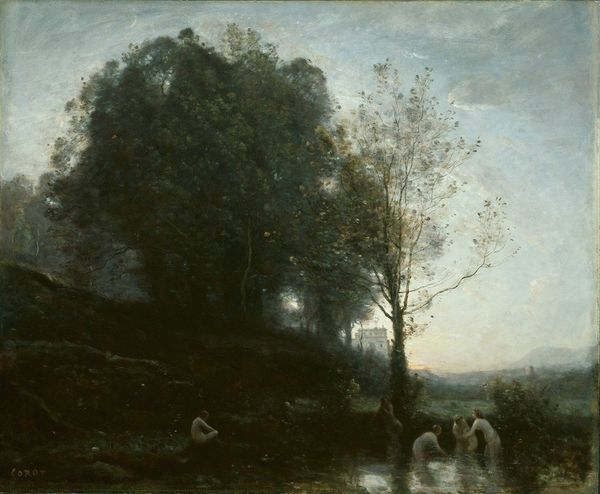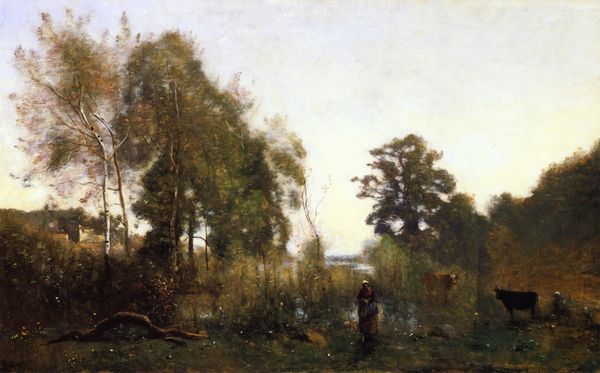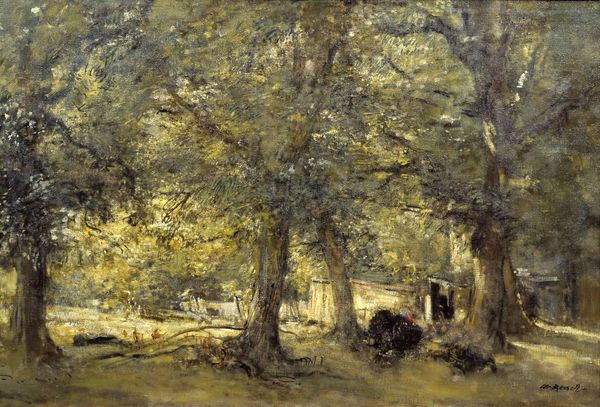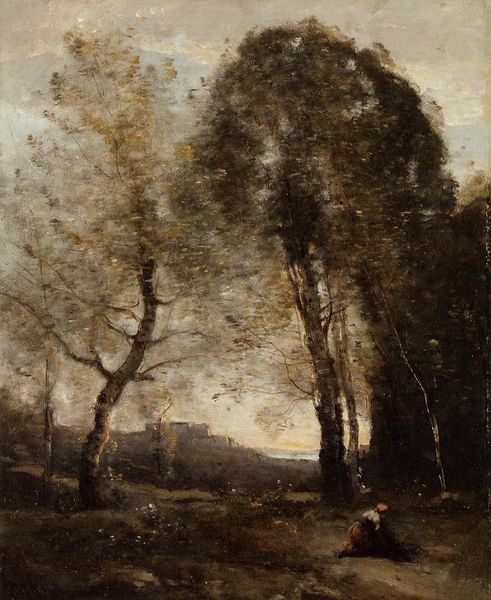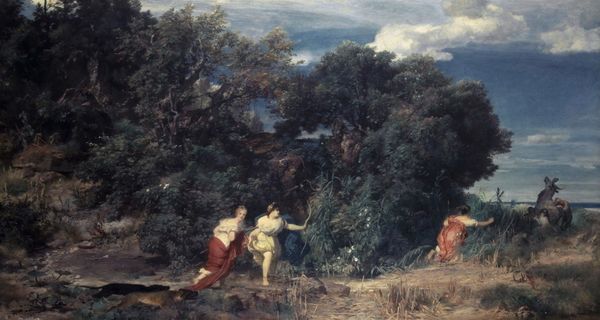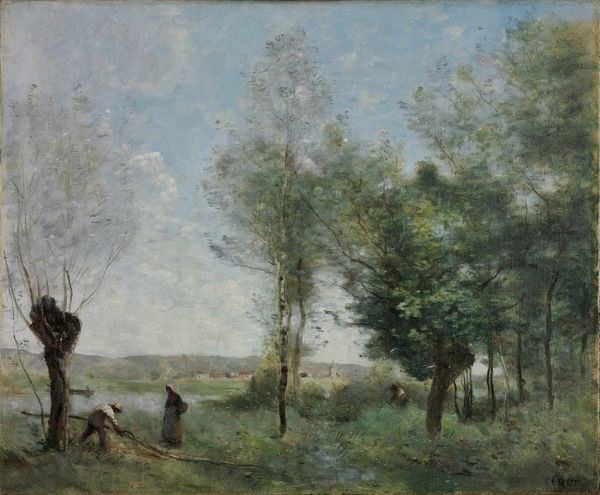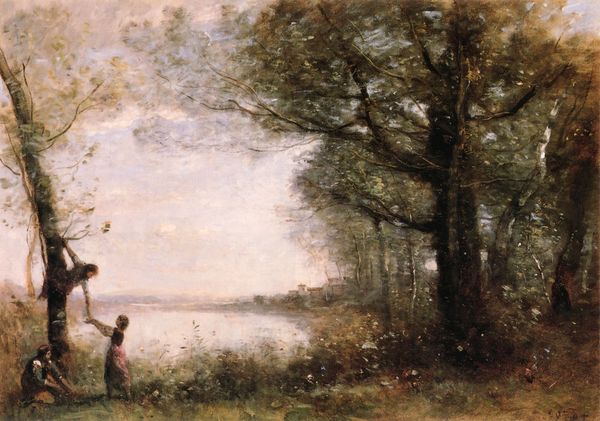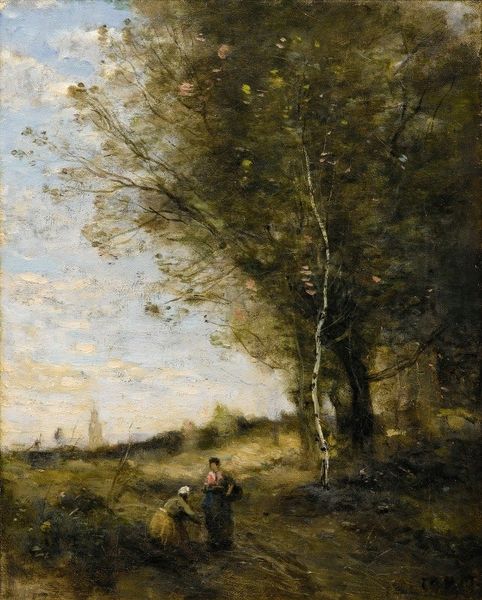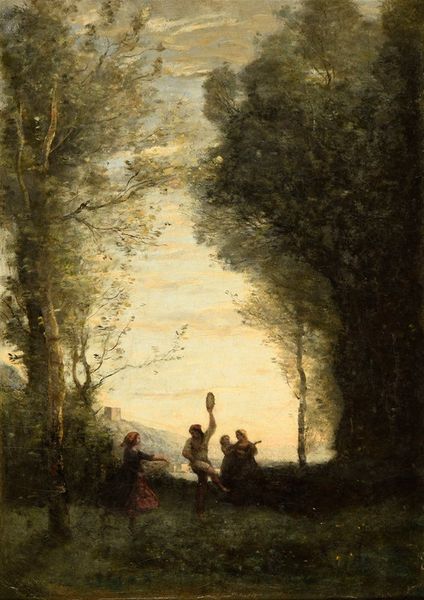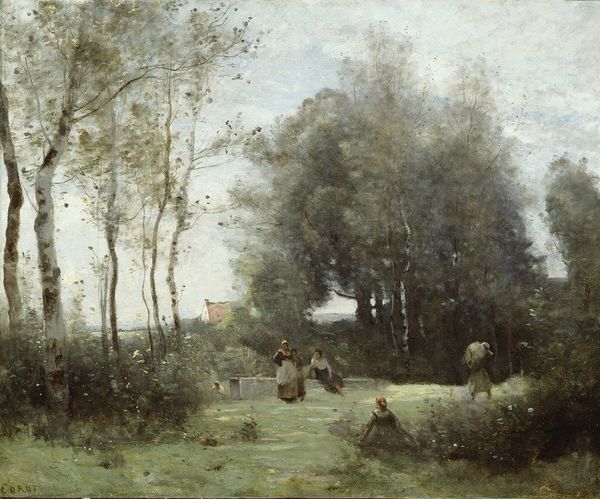
Copyright: Public domain
Curator: I'm struck by the sheer drama of the setting, its heavy darkness, almost theatrical. What do you make of the symbolic implications of this visual language? Editor: Before we go further into that darkness, let's give our listeners some background. What we're looking at is "Woman with Garland," crafted by Gustave Courbet around 1856 using oil paints. Curator: Thank you. It certainly plays into the style known as Realism that Courbet spearheaded. In many ways this piece speaks to issues of female agency, particularly given Courbet's penchant for challenging academic standards of beauty and representation. The forest, almost claustrophobic, feels less like idyllic nature and more like the restrictions placed on women. The vibrant red dress becomes a signifier of rebellion, or perhaps an attempt to stand out, while her bowed head shows a defeat in it. Editor: That's interesting, I see the garland as something other than nature—something carefully constructed, almost performative. Flowers have had various cultural meanings. Her arrangement is particularly interesting when we consider the language of flowers and their Victorian associations: what's being said through this chosen combination of species, especially by the character presented in this piece, can provide clues about societal anxieties, emotional longing and unfulfilled potential. The shadows here become less a metaphor for constraint and more a frame, highlighting an internal psychological landscape, almost creating a scene where she feels imprisoned by her internal world more so than society. Curator: And don't forget that Courbet was invested in capturing social realities in his art, critiquing power structures. So, while psychological introspection is certainly there, framing it as purely internal risks ignoring the external pressures on the individual that intersect within the piece, no? I'm hesitant to erase the historical contexts of such constraints; we also see them reflected within his paintings about modern social change during the industrial revolution in France. Editor: You're right to bring up Courbet's wider engagement with societal issues. Considering this and bringing forward its cultural relevance can shift my first readings of it from isolation into highlighting the historical pressures women faced, the burden they still struggle with in an increasingly fraught cultural milieu of unrealistic expectations and personal expression. It does not necessarily erase individual interpretations, however. Curator: It's a constant dance, isn't it? I think in that, the tension it presents encourages me to engage deeper with our current socio-political context, using past visual dialogues such as this artwork, for greater consideration and conversation about where our current society is going and how it affects our cultural evolution. Editor: Indeed. Considering the image through historical context enriches my appreciation for it beyond symbolic association; however, I think in it it creates a wider interpretation than would typically come forward when regarding portrait art such as this.
Comments
No comments
Be the first to comment and join the conversation on the ultimate creative platform.
